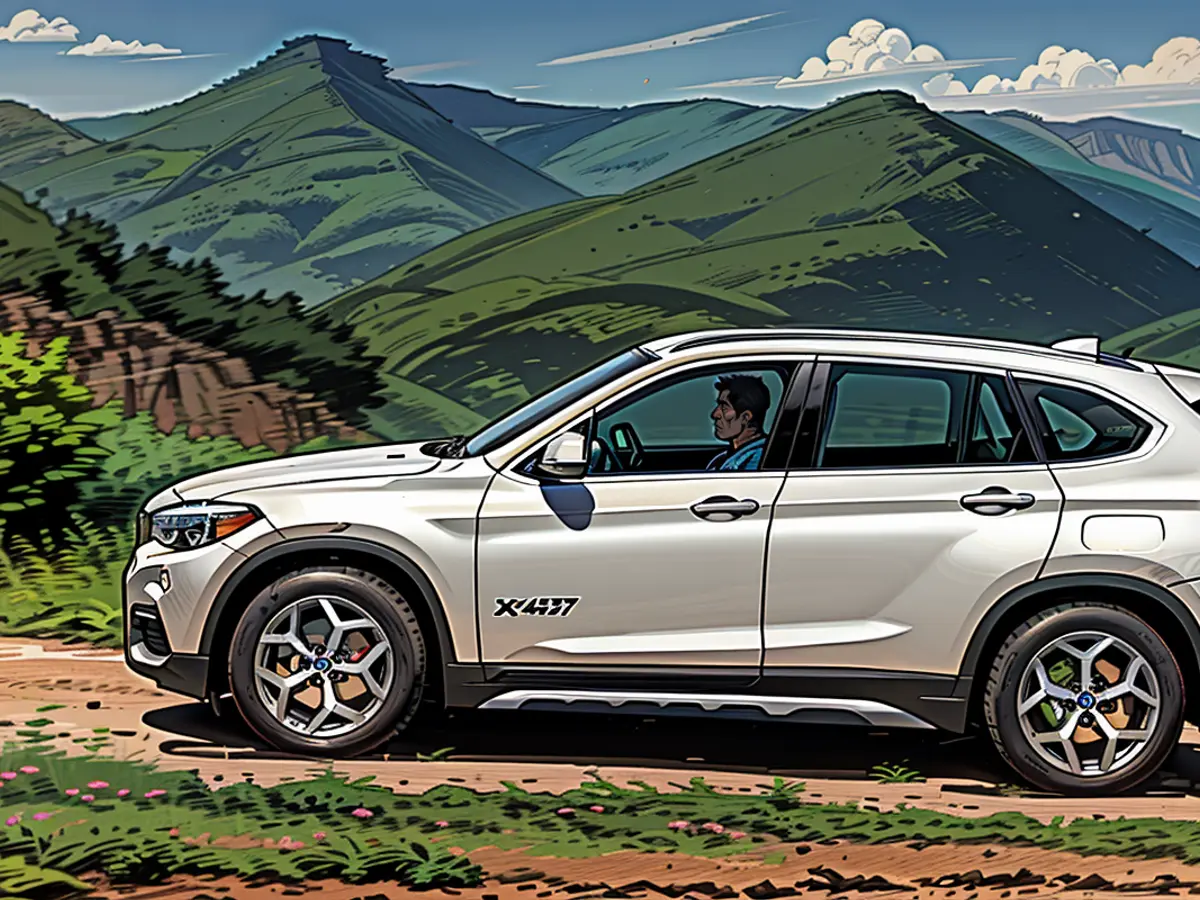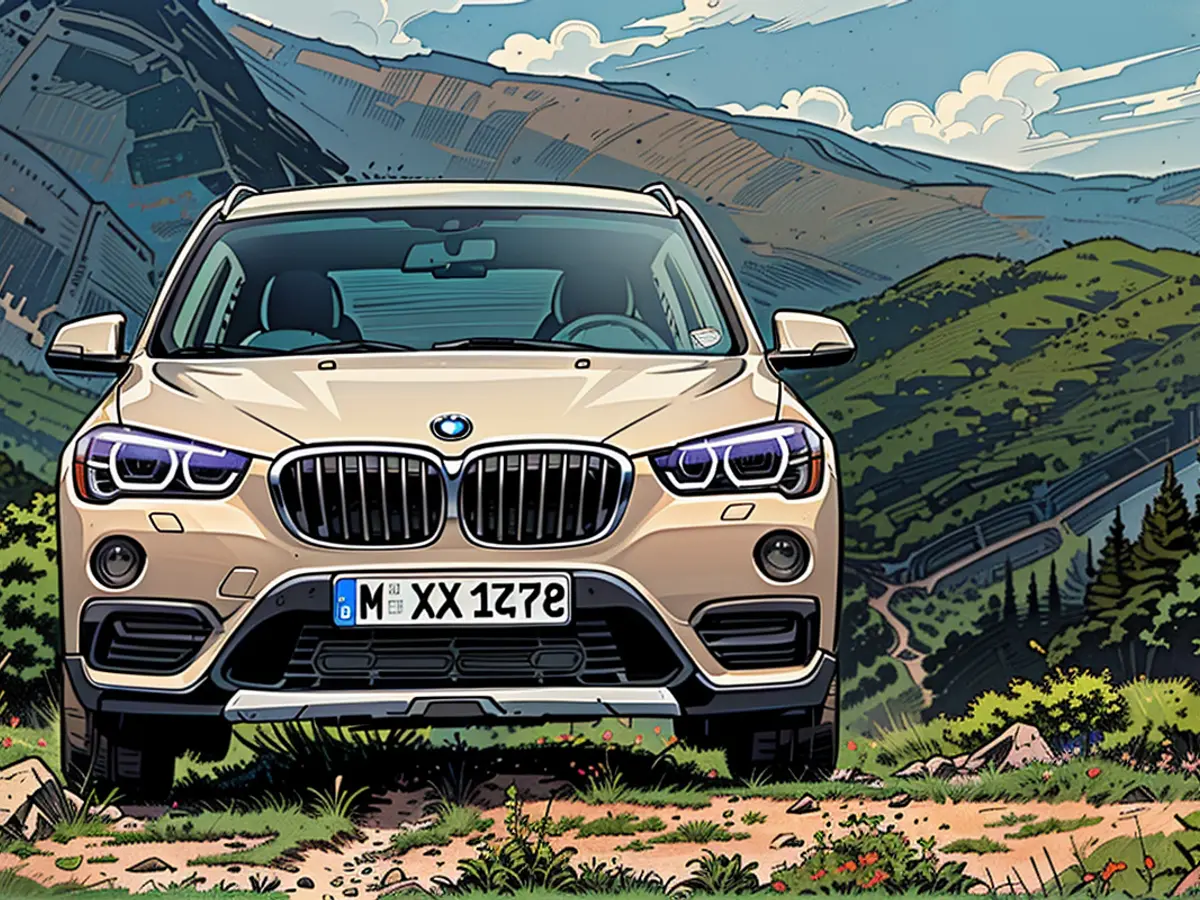Agile SUV: BMW X1 Offers Speed, Utility, and No Storage Concerns
Improved functionality and daily usability: In its second iteration (from 2015 to 2022), the BMW X1 transformed from a somewhat car-like handling SUV to a practical everyday SUV. Despite adopting a front-wheel drive architecture, the Munich-made vehicle remains one of the nimblest in its class.
Quality
The X1 performs well during TÜV inspections but can only truly outshine the competition in its early life. From the second technical inspection, it delivers average quality, defying premium expectations. However, it has put an end to the issues with the brakes that were often criticized in the predecessor, and the suspension - a weak point for many competitors - presents a tendency towards stability. The second generation, however, is prone to oil loss in the engine or transmission - a relatively new problem in this series.
Exterior and Interior Design

The first generation of the X1 still resembled a compact hatchback from the outside, but the second edition takes on the classic SUV look seen in the larger X-models from the brand. Technologically, it breaks new ground, using the front-drive platform of the 2-series Active Tourer and Mini. Since the engine can be positioned transversely at the front, the passenger space significantly increases compared to the predecessor, even though the New Model is 4.44 meters long.
The cargo space is also impressive. In standard configuration, the luggage compartment holds 500 liters, but with the rear seats folded down, it expands to 1550 liters. The BMW was optionally available with a moveable rear bench, increasing flexibility in daily life. The interior is typical BMW; the level of elegance or luxury depends largely on the buyer's preference for premium options.
Engines and Performance

The predecessor still had six-cylinder engines, but in the second generation, only three- and four-cylinder engines with 1.5 and 2.0-liter displacements and a power range of 85 kW/116 PS to 170 kW/231 PS are available. For easier differentiation, models with front-wheel drive are labeled as sDrive, whereas those with all-wheel drive are tagged as xDrive. The starting gasoline engine is a 100 kW/136 PS three-cylinder with front-wheel drive (18i). The 141 kW/192 PS four-cylinder (20i) is also available with all-wheel drive.
The fuel consumption figures look impressive on paper: BMW quotes between 5.1 liters for the sDrive 18i and 6.7 liters for the xDrive 20i. The smallest diesel (18d) comes with 110 kW/150 PS, the 20d with 140 kW/190 PS. Both are also available as xDrive. The top model is the xDrive25d with 231 PS. The average fuel consumption varies between 4.1 and 5.2 liters. Since the beginning of 2020, the X1 is available as a plug-in hybrid (xDrive25e) in combination with a 92 kW/125 PS three-cylinder and an electric motor with 70 kW/95 PS. The total power output is 162 kW/220 PS. A range of nearly 50 kilometers in electric-only mode is possible.
Extras and Safety

The basic equipment, which was offered at market launch for around 30,000 Euro, includes, among other things, a 6.5-inch color display, climate control, voice control, and a leather steering wheel, as well as some assistance systems. There was still a lot of room for extras such as the large infotainment system, navigation, head-up display, or distance control at market launch. LED lighting had to be ordered as an option until the facelift.
In the price list with 70 pages, there were also options like an electric tailgate, larger wheels than the standard 17-inch tires, and many assistants. In 2015, the X1 passed the EuroNCAP crash test with five stars.
In summary,

A combination of classic compact SUV qualities and dynamic driving performance. And - at least for budget-conscious first-time buyers - a hint of Premium style. From a technical standpoint, there are no notable issues. Currently, around 6000 used X1s of the second generation are available for sale on mobile.de. Prices start at around 10,000 Euro.
Read also:
When considering purchased options, a potential buyer might be interested in checking the MOT history of a used BMW X1, ensuring its roadworthiness. Given the X1's excellent braking system improvement, a well-maintained used model from the second generation can provide the perfect blend of practicality and premium style, making it an attractive choice among used cars with BMW models.








